Tips from Olle Garden Bed: Rye Covered Crops
The use of rye mulch crops for mulching is a simple way to keep the soil profile healthy and in place when it is not used for subsequent crops. A rest season can lead to soil erosion and loss of nutrients, but covering crops with cereals and rye can prevent this. It is a good idea to cover crops with grain rye, because you can use the method of chopping and dropping to return nitrogen to the soil, which means that your next crop does not need so much fertilizer! The following content also has some reference value for raised garden beds.
Large scale farmers or gardeners often use mulch crops, but backyard gardeners can also use this natural "hacker". This is a simple way to provide much-needed nutrients in spring and control weeds in cool months. Why don't you want to make your life easier?
Let's talk about the definition of mulch crops and why you should include rye in your garden, no matter how small.
What is mulch crop?
Covering crops is another way you can "work smarter, not harder" in your garden. They are planted in areas where you do not currently grow crops to protect the soil surface from erosion. Many people use mulch seeds to restore soil vitality after a period of use.
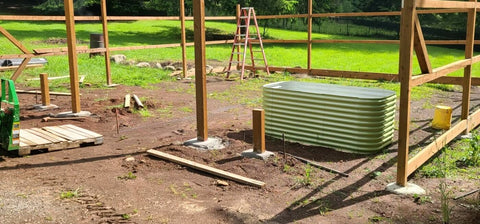
On a large scale, farmers will cover the entire field and crops to prevent the wind from blowing away all the soil or snow, causing the ground to freeze and compact. This method is usually used for crop rotation before planting corn or other cash crops. Although you don't use a space to grow what you normally grow, you can plant a mulch crop so that it will be full of nutrition the next time you use it.
On a smaller scale, you can plant mulch crops for elevated beds, similar to the way farmers deal with fields. You can also plant mulch crops between vegetable or fruit rows to control weeds.
Type of covering crops
Almost any plant can be a mulch crop, but you can use some categories in your garden. Each method provides different benefits, so you need to decide which type is best for you based on your needs.
Brassica
Brassica is a good mulch crop because you can eat your harvest! This hardy crop family will winter in many areas, capture nutrients, catch nematodes and other pests, and prevent soil erosion by covering the area with large leaves. Try planting kale as a cover crop in an area of the garden!
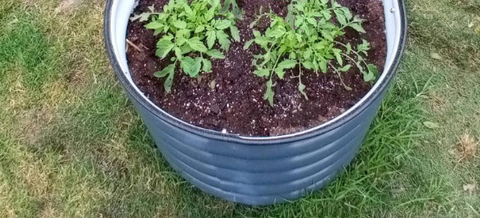
Broadleaved plant
Other cover crops, such as broad-leaved plants that are not brassica or legumes, are a good choice because they grow rapidly and provide many of the same benefits as brassica. You can eat your harvest or cut and drop plants, such as spinach, to nourish your next crop. Yield range shall be as much or as little as possible.
grass
Grasses such as grain rye, barley, standing corn or oats are almost always used like chopping and dropping methods because they release nitrogen and carbon into the soil. They are also used for grain cultivation. The nutrients of cereals will help your next crop develop a deep root system and sufficient leaves. Grasses are also used because they have deep roots, can keep the soil in place and are easy to cultivate. Use a high sowing rate to obtain a large amount of grain or nutrients from it.
peas and beans
If your bed needs nitrogen, legume mulching is the way to go! Beans, peas and other beans are nitrogen fixing, so they will supplement the soil during the growth process. They grow and decompose quickly, making them a wise choice for garden beds. In addition, you can eat harvested, chopped and fallen leaves! Some examples of legumes covering crops include growing large quantities of beans, hairy grapes or peas.

Benefits of mulching
In terms of covering crops, the list of benefits is long. No matter how you plant your garden, there must be a way to make mulch crops good for you.
Reduce erosion: open fields or flower beds will lose soil due to wind or flood. When you cover unused areas with mulch crops, the soil will largely remain in place because the roots anchor it, and vice versa. Soil moisture will also be retained. On farms in windy areas, mulching is necessary, but family gardeners can also benefit from this practice.
Keep the soil cultivable: roots keep the soil loose and prevent compaction, making it easier for you to cultivate the soil. Loose soil will make it easier for young roots to navigate, resulting in stronger roots and healthier plants.
Quick solution: Although this depends on plants, many mulch crops grow rapidly, even at very low temperatures. You can plant most mulch crops in the fall and get rewards before planting the next batch of seeds in the early spring.
Weed control: Weed control is one of the greatest benefits of home gardeners. If the ground is covered with the plants you want, there will be no chance for weeds to break into your garden.
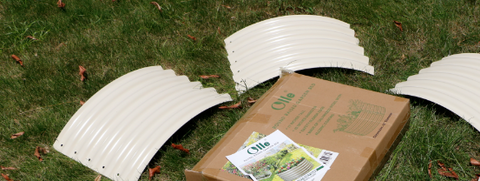
Keep soil moisture: Loose soil can prevent water runoff, and winter crops will catch snow, so it will melt where you need water most.
Maintain soil fertility: When you continuously use an area to grow crops, the soil quality will continue to increase over time. Almost any plant can have a positive impact, but cutting down crops and beans (such as the hairy crape myrtle) is particularly helpful.
Good for wildlife: The continued availability of plants will benefit wildlife, which means you will see more pollinators and birds. Your mulch crops will contain beneficial insects and bring nature back to your garden, which will help you get more harvest.
What is rye?
Rye is a kind of grass used for covering crops. It is similar to other grasses such as oats or barley and can be used to make bread, flour and grains. Grain rye is specially used for grain production and is a common ground cover because it provides many benefits. Rye can also be used to feed livestock. Rye is sown to establish residual soil for future crop planting, prevent weeds, and establish soil biomass.
Advantages of Rye Covered Crops
Although you may not use rye to make baked food at home, you can certainly use it to improve your soil! However, some rye varieties can definitely be used like wheat or barley.

Ryegrass, especially grain rye, is very common because it can withstand cold temperatures and grow rapidly. It can germinate at temperatures as low as 33 ° F, and mature plants can withstand temperatures as low as - 30 ° F! When you plant rye, you can choose a later planting date in autumn, which will enable you to benefit from autumn crops as long as possible.
Rye has deep roots, so it is very suitable for decomposing compacted soil or preventing compaction. Rye biomass and crop residues will also help to keep water and nutrients deep underground, which will greatly increase soil health! This makes it suitable for almost any soil type. In addition, it is drought resistant, and you have a lot on hand.
You can build rye at a high seeding rate and practice planting rye as a close covering crop to prevent weeds and erosion and increase yield. Rye is quite resistant to disease, so you may not deal with many problems when growing rye.
You should pay attention to Fusarium head blight, which affects many kinds of grains. Remove any garden coverings that distort or discolor seed heads to prevent the spread of the disease.
When harvesting rye, you can use the method of chopping and dropping. This is where you cut it and process it into the soil, so that these nutrients can return to the soil. Compared with traditional tillage, it will be easier for your subsequent crops to obtain improved soil structure. Ryegrass is also a good mulch, so you can use it this way if you want.
Disadvantages of Rye Covered Crops
The biggest concern of rye as a mulch crop is allelopathy. Some plants inhibit the growth of other plants. Rye can prevent the seed germination of several plants, especially corn, corn silage or other cereals. You can avoid this by waiting at least two weeks before planting in the same area as rye. Spring rains may cause rye residues to linger, which may damage your next planting.
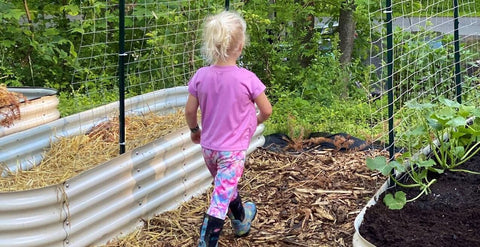
Another big problem relates to nitrogen fixation. If you don't leave the roots or use the method of chopping and dropping, rye can tie (steal) nitrogen from the soil. Rye absorbs nitrogen during its growth, but once you cut it down, returning plants to the soil will increase organic matter and restore nutrients. If you choose to use rye fields as mulch or feed animals, you may deprive the soil of much-needed nutrients.
Rye is an annual plant in winter and needs cold weather to thrive. So if you try to plant it in a hot climate, you won't see good results without too much cold weather in winter. If you live in a hot place, barley or oats are a good choice, but they will experience winter dormancy or winter killing.
If you plan to feed animals with annual rye, you must harvest it quickly, because it will soon change from edible straw to dry straw in spring.
Another problem that may arise when planting with rye mulch is that residual herbicides may remain on the plant after you cut them and drop them. This may affect the growth of subsequent crops. If you are using herbicides, be sure to carefully read the herbicide label to prevent residues from entering nearby rye crops.
How to plant rye covered crops
Planting rye seeds and planting rye is a simple process, which will give you a great return. If you live in a cool area in cold winter, you may succeed in this crop, especially when you work at a high planting rate.
Growing demand
It's easy to grow rye if you can provide it with enough sunlight and consistent water. Rye thrives in cool temperatures with at least six hours of sunshine. It is a hardy plant that can tolerate some dry soil, but is designed to keep it moist. It can even deal with some flooding if you end up with excess rain or snow.
Grain rye and standing rye are tolerant of soil. They like sandy soil or light loam, but they can grow in almost anything, including thick clay. Try your best to provide rye with its preference, but know that if you can't get it right, there is still some room for manoeuvre.
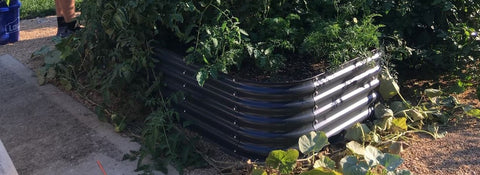
When to sow
In the cold resistant area 3-7, you can set the early planting date of rye at any time from late summer to mid autumn. In a warm climate, you need to wait until late autumn or deep winter. Early planting will cause plants to absorb more nitrogen before winter, which will benefit you later when you plough rye into the soil.
Choose a planting date, plant winter ryegrass between August and October, and sow winter rye grains in early autumn. Similarly, for people in warmer regions, the planting date will be later. The goal is to have enough time for rye to set up before the first light frost. Rye winter grass provides some garden cover and controls erosion as the soil temperature cools under light frost.
Method of adjusting crop direction
Rye can be grown in your garden in many ways. You can broadcast it on a large area at a high seeding rate, and use this method for rotation every year. You can plant it as a nurse crop to help create another perennial crop.
You can also practice double planting, planting rye seeds next to corn crops, and harvesting rye biomass and corn stubble in corn production. Therefore, if needed, you will get livestock feed and provide weed management for your space.
You can also plant rye with more controllable seeding rate in the strip between other crop lines to suppress weeds and provide windbreaks for young seedlings, or supervise with other crop seeds to prevent weeds when plants grow.
If a crop cannot grow somewhere in the garden, plant some rye seeds in that area. You can use rye to cover crops with the biomass of rye and the benefits of weed control, rather than lamenting the loss of crops you may have. Rye residues will improve the soil, and you may have better luck planting another crop seed there next time!
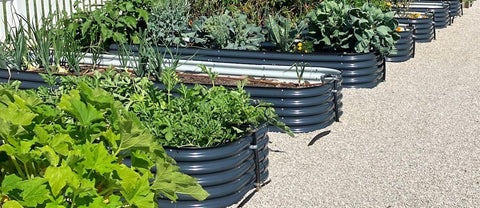
How to plant seeds
It doesn't take much effort to grow rye. Broadcast viable seeds where you want them and gently put them in the ground. Ensure that the sowing depth does not exceed two inches, or the rye seed may not germinate. Sowing at a high rate to minimize rye biomass and weeds.
If an area is prone to erosion or soil compaction, the seeds are serious because some seeds may not germinate due to poor soil conditions.
Lightly water the rye seeds and keep the soil constantly moist during growth.
How to harvest
Rye can be harvested as grain when it is 12-18 inches tall. Don't let the grass blossom, or volunteer rye seeds will pop out in your garden. Unless you are cultivating rye residues to reduce wind erosion, try removing all remaining parts of rye plants.
If you want to cut and drop the cover crop rye, cut the rye and plant it in the soil. The harvest is so simple!
If you are feeding livestock or using rye as a mulch, chop the rye as usual, but throw it where you want it, not back into the soil. Larger plantings may require mechanical cultivation.

common problem
Q: When should I cut off winter rye mulch crops?
A: In early spring, when the mature rye reaches 12-18 inches before flowering, cut it.
Q: How long can you plant rye mulch crops?
A: In the cold resistant area 3-7, you can plant it until the Mid Autumn Festival. In a warm climate, you can plant in the middle of winter.
Q: How do you cover crops with ryegrass?
Answer: You can plant seeds in large areas at a high sowing rate, or you can plant them in strips between other crops. This provides weed management, and rye biomass provides you with
Q: Which crop is better to cover wheat or rye?
A: Wheat and rye are very similar mulch crops with similar benefits. Wheat is more suitable for warm climate, while rye is more suitable for cool climate. Both provide complete weed control when seeded at ground cover rates.
Q: Does winter rye come back every year?
A: Rye will not come back every year unless it drops its seeds and the seeds try to stay there all year round. Expect to plant it every year, because it is an annual crop, not a perennial crop.
Q: What is the difference between winter rye and ryegrass?
Answer: Except that the seeds of rye are larger than ryegrass in winter, there is no big difference, and the seeds can be easily and evenly sown.
